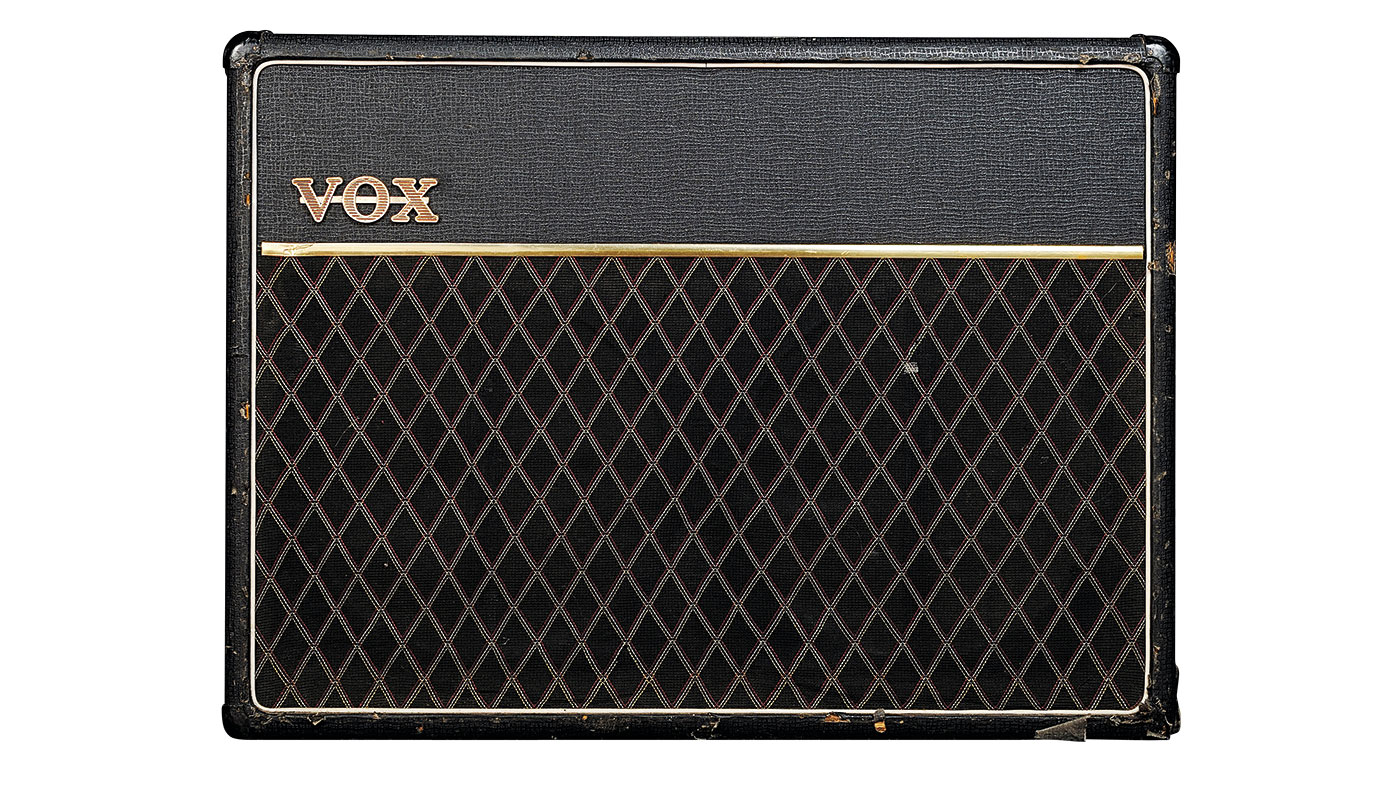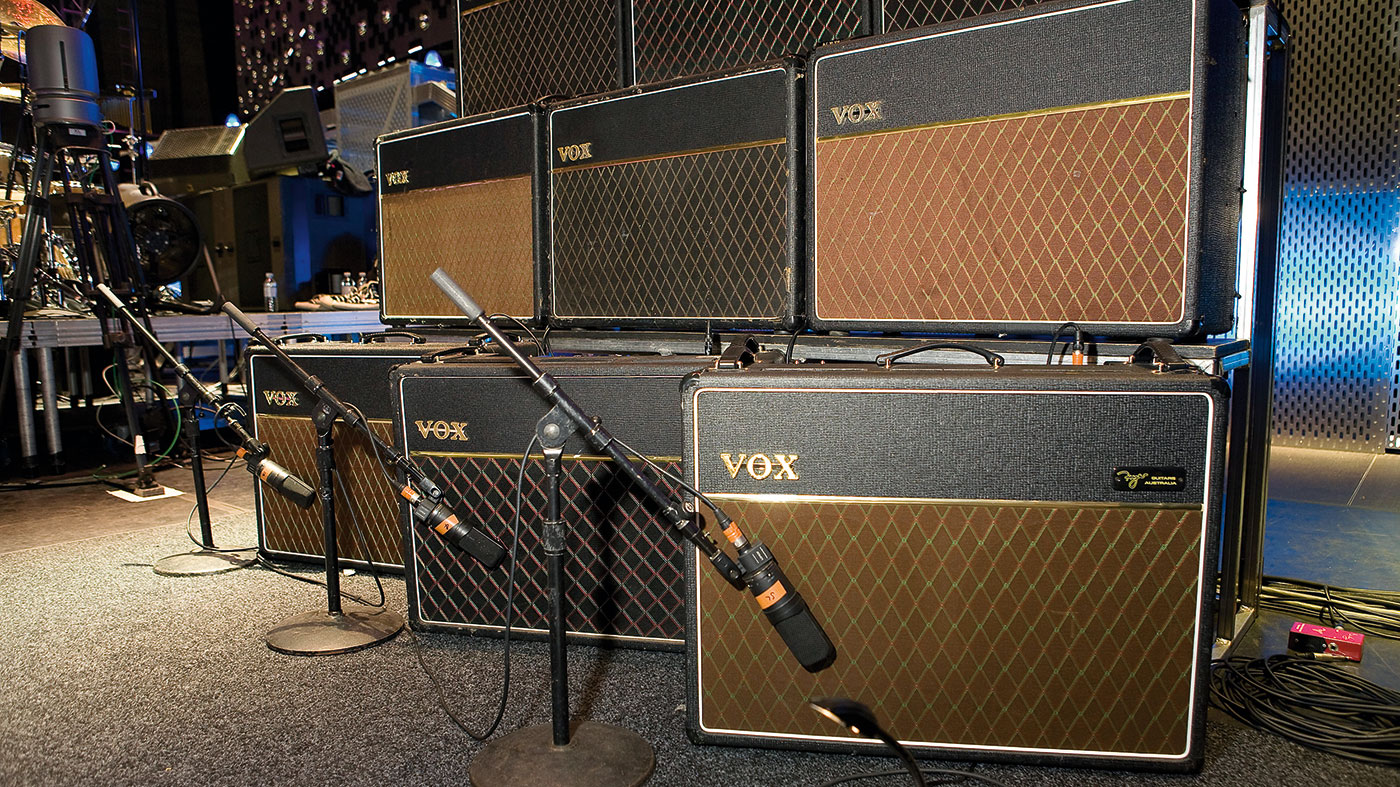How to get classic Vox AC30 tones using guitar modelling
Our guide to the essential amp icons and how to use them

Celebrate 60 years of EL84 chime by dialling in some classic AC30 sounds...
Among many products that claim some sort of iconic status, Vox’s AC30 guitar amplifier is the real deal, occupying a unique place in the history of pop music, and you’ll find one in any self-respecting amp modeller worth its salt.
Originally made as a custom order for Shadows guitarist Hank Marvin so he could be heard over thousands of girls screaming for Cliff Richard, the AC30 was basically a ‘double’ AC15.
The AC30 went on to become the sound of The Beatles, The Rolling Stones, The Who, The Kinks and scores of other bands
The AC30 went on to become the sound of The Beatles, The Rolling Stones, The Who, The Kinks and scores of other bands who followed The Beatles to America in the 60s as part of the British Invasion. In the 1970s, the AC30 returned to centre stage as the amp of choice for Rory Gallagher, Queen and U2, who all helped elevate Vox’s masterpiece to the iconic status it enjoys today.
Vox was purchased by Japanese synth giant Korg in 1992 and has enjoyed steady growth ever since, returning the brand to the global market-leading status it always deserved. The modern AC30 is somewhat different to its 60s ancestors in terms of features; sonically, however, it’s just the same if not better, because modern components have helped improve noise levels, consistency and reliability.
The key original elements are closely approximated within modern modelling units, too: the Top Boost circuit, the quartet of EL84 valves, the tremolo circuit and the quirky backwards Tone Cut control that acts on the output stage. Add in some reverb, and you’ve got serious AC30 tone that’s simultaneously applicable to classic cleans, indie break-up and high-octane punk overdrive.

1. Top Boost circuit section
Vox augmented early AC30s with a module that featured active bass and treble tone controls, called the ‘Top Boost’ module. From around 1963, the Top Boost circuit was properly integrated into the circuit. Top Boost tone controls are very interactive.
Get the MusicRadar Newsletter
Want all the hottest music and gear news, reviews, deals, features and more, direct to your inbox? Sign up here.
2. Tone Cut control
The AC30’s Tone Cut is an integral part of the AC30’s sonic shaping. It works backwards, reducing treble as you turn it up. This quirky circuit sits in the power amp section, so there’s no loss of gain in the preamp tone control section.
3. Tremolo and reverb
The AC30’s tremolo effect is one of the amp’s original features; if you want to evoke the heady days of the early 60s, this is a great place to start. Reverb is a modern addition - it wasn’t available on original AC30s.
Classic tone #1 - starvin’ for Marvin

Delay 1 approx 300ms 1 repeat
Delay 2 approx 400ms
Reverb approx. 2.5 seconds with 120ms predelay
The Marvin sound (as heard on the likes of Apache) is all about clarity - use your amp modeller’s Top Boost AC30 sound with the gain low and master high.
Echo is essential; find a good multi-tap or tape echo model. Combine this with a warm reverb chamber eff ect and a Strat bridge pickup. To get the twang just right, try picking over the neck pickup while holding the trem arm.
Classic tone #2 - tone of the Queen age

Reverb approx. 150ms
Brian May’s lead sound on We Will Rock You is about as extreme as you can get from an AC30. Here, you should use a Top Boost lead channel model with gain maxed out and ride the treble as high as you dare.
A Tube Screamer-type overdrive effect can help boost gain and treble for definition. Then you can glue the whole lot together with a short medium/bright room reverb for ambience.
Classic tone #3 - nothing left to Foos

Trem depth 5
Trem speed 7
The AC30 is all over the Foo Fighters’ third album, There Is Nothing Left To Lose. The Stones-y raunch of Gimme Stitches uses multiple layered medium drive rhythm parts together with a great watery AC30 tremolo for the lead hook.
Use a compressor with an AC30 Top Boost model set to high gain to ape the rhythm parts, and for the hook use lower gain settings and a medium-fast trem effect.

Mod squad
Find the AC30 model in your amp or software
Line 6: Essex A30, Brit Class A, Class-A30
Fender Mustang GT: 60s Brit
IK Multimedia AmpliTube: Crunch
Native Instruments Guitar Rig: AC Box
Yamaha THR: Crunch
Blackstar ID: Crunch/EL84
Vox Valvetronix: AC 30
Marshall Code: 50s British
Total Guitar is Europe's best-selling guitar magazine.
Every month we feature interviews with the biggest names and hottest new acts in guitar land, plus Guest Lessons from the stars.
Finally, our Rocked & Rated section is the place to go for reviews, round-ups and help setting up your guitars and gear.
Subscribe: http://bit.ly/totalguitar










